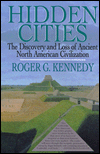Anthropology
Related: About this forumWhite Settlers Buried the Truth About the Midwests Mysterious Mound Cities
Pioneers and early archaeologists credited distant civilizations, not Native Americans, with building these sophisticated complexes

View of Monks Mound from Woodhenge Circle (Photo courtesy of Sarah E. Baires)
By Sarah E. Baires, Zócalo Public Square
smithsonian.com
February 23, 2018 10:56AM
Around 1100 or 1200 A.D., the largest city north of Mexico was Cahokia, sitting in what is now southern Illinois, across the Mississippi River from St. Louis. Built around 1050 A.D. and occupied through 1400 A.D., Cahokia had a peak population of between 25,000 and 50,000 people. Now a UNESCO World Heritage Site, Cahokia was composed of three boroughs (Cahokia, East St. Louis, and St. Louis) connected to each other via waterways and walking trails that extended across the Mississippi River floodplain for some 20 square km. Its population consisted of agriculturalists who grew large amounts of maize, and craft specialists who made beautiful pots, shell jewelry, arrow-points, and flint clay figurines.
The city of Cahokia is one of many large earthen mound complexes that dot the landscapes of the Ohio and Mississippi River Valleys and across the Southeast. Despite the preponderance of archaeological evidence that these mound complexes were the work of sophisticated Native American civilizations, this rich history was obscured by the Myth of the Mound Builders, a narrative that arose ostensibly to explain the existence of the mounds. Examining both the history of Cahokia and the historic myths that were created to explain it reveals the troubling role that early archaeologists played in diminishing, or even eradicating, the achievements of pre-Columbian civilizations on the North American continent, just as the U.S. government was expanding westward by taking control of Native American lands.
Today it’s difficult to grasp the size and complexity of Cahokia, composed of about 190 mounds in platform, ridge-top, and circular shapes aligned to a planned city grid oriented five degrees east of north. This alignment, according to Tim Pauketat, professor of anthropology at the University of Illinois, is tied to the summer solstice sunrise and the southern maximum moonrise, orientating Cahokia to the movement of both the sun and the moon. Neighborhood houses, causeways, plazas, and mounds were intentionally aligned to this city grid. Imagine yourself walking out from Cahokia’s downtown; on your journey you would encounter neighborhoods of rectangular, semi-subterranean houses, central hearth fires, storage pits, and smaller community plazas interspersed with ritual and public buildings. We know Cahokia’s population was diverse, with people moving to this city from across the midcontinent, likely speaking different dialects and bringing with them some of their old ways of life.

View of Cahokia from Rattlesnake Mound ca 1175 A.D., drawn by Glen Baker
(Image courtesy of Sarah E. Baires)
The largest mound at Cahokia was Monks Mound, a four-terraced platform mound about 100 feet high that served as the city’s central point. Atop its summit sat one of the largest rectangular buildings ever constructed at Cahokia; it likely served as a ritual space.
Read more: https://www.smithsonianmag.com/history/white-settlers-buried-truth-about-midwests-mysterious-mound-cities-180968246/#gMJWq2s4GDbYjTOL.99
Angry Dragon
(36,693 posts)RelativelyJones
(898 posts)riversedge
(70,214 posts)eppur_se_muova
(36,262 posts)Glorfindel
(9,729 posts)by Charles C. Mann that deals with this and many other accomplishments of Native Americans. It's definitely worth a read. And thank you, Judi Lynn, for sharing this most interesting article with us! ![]()
